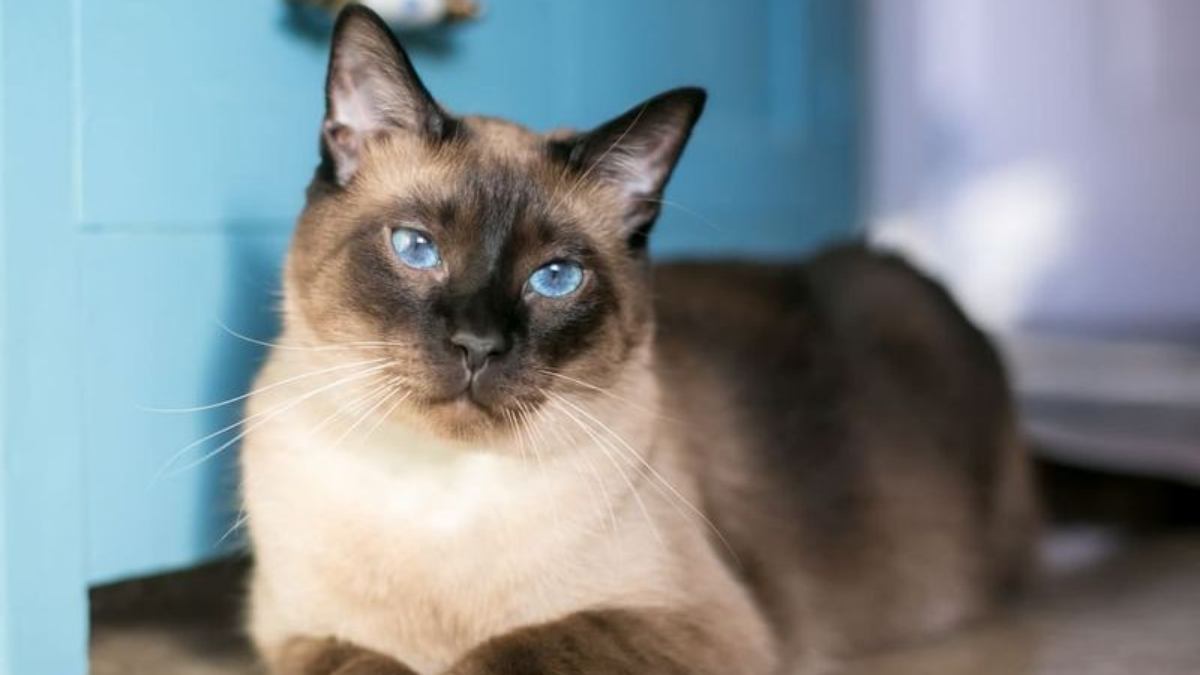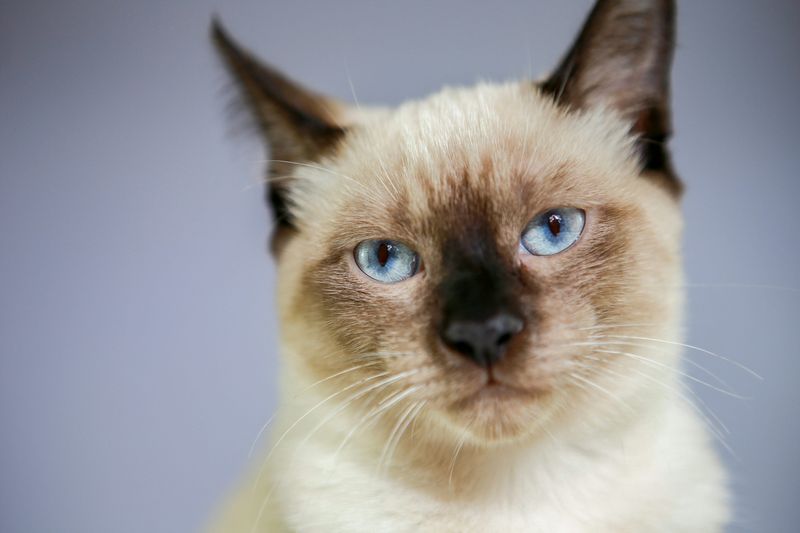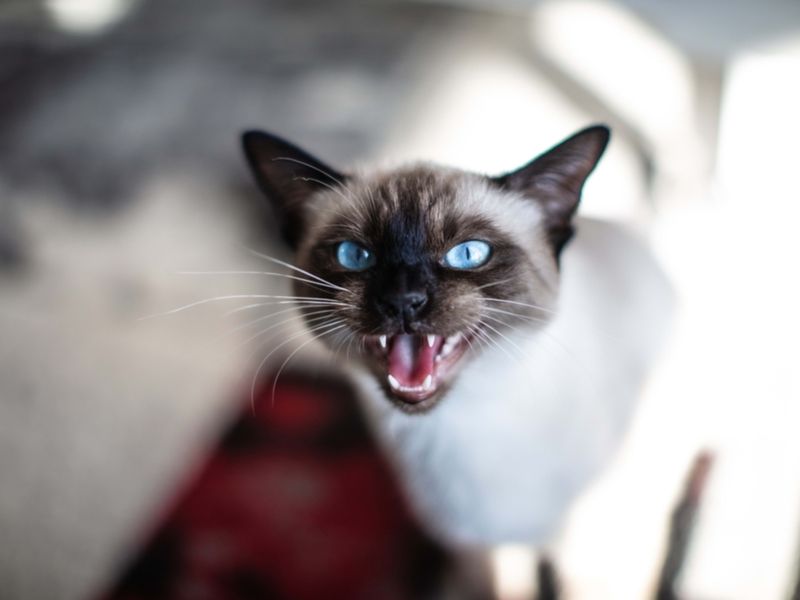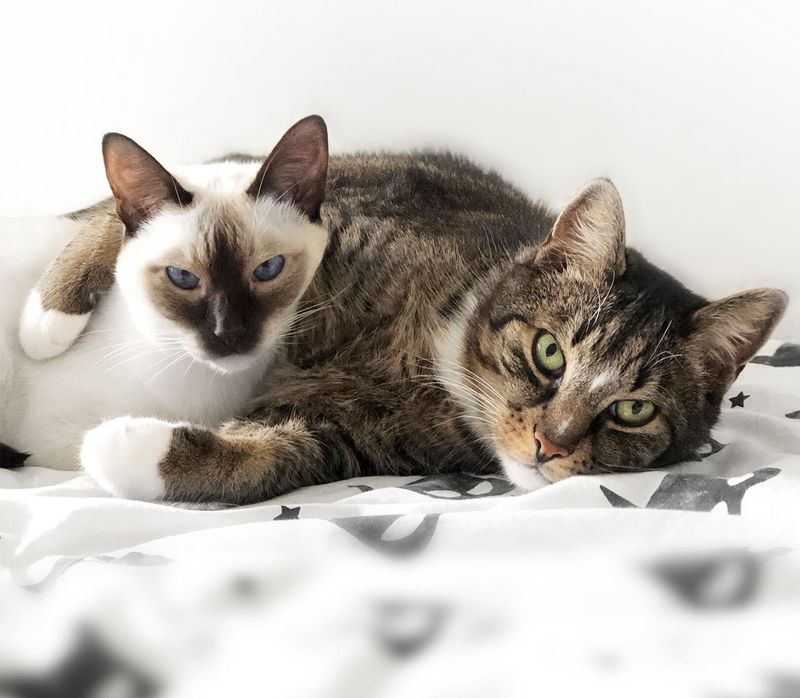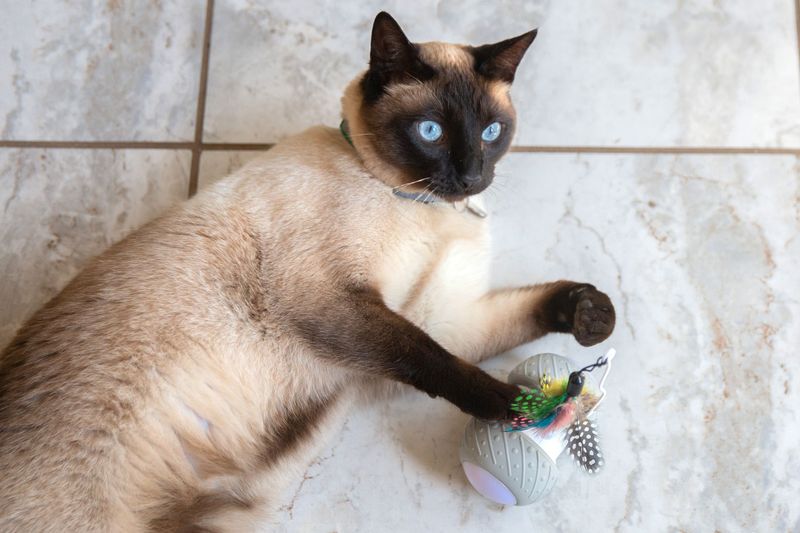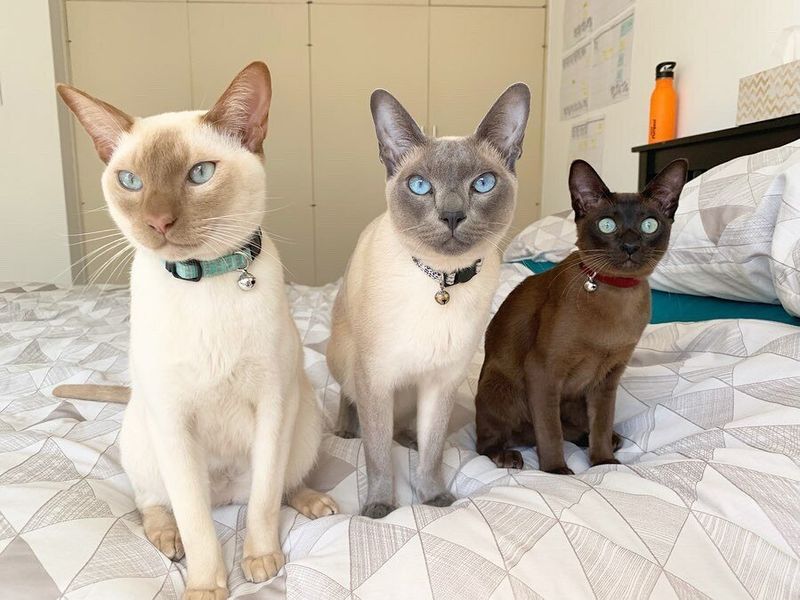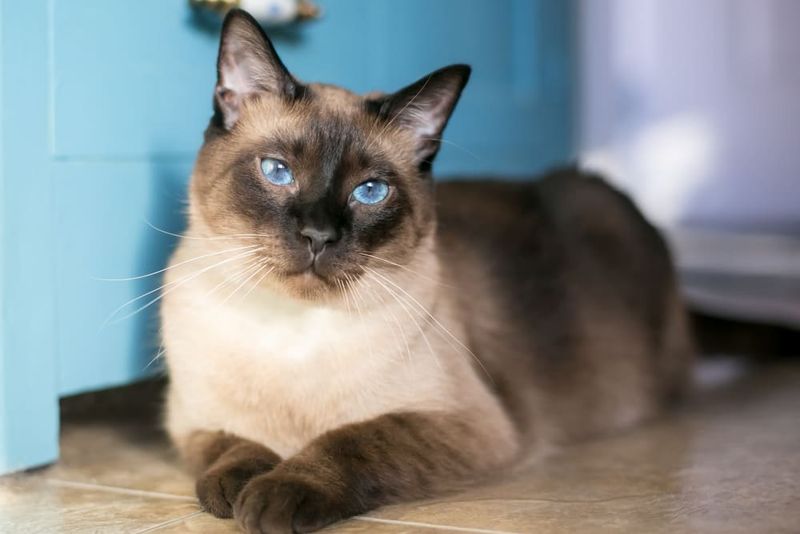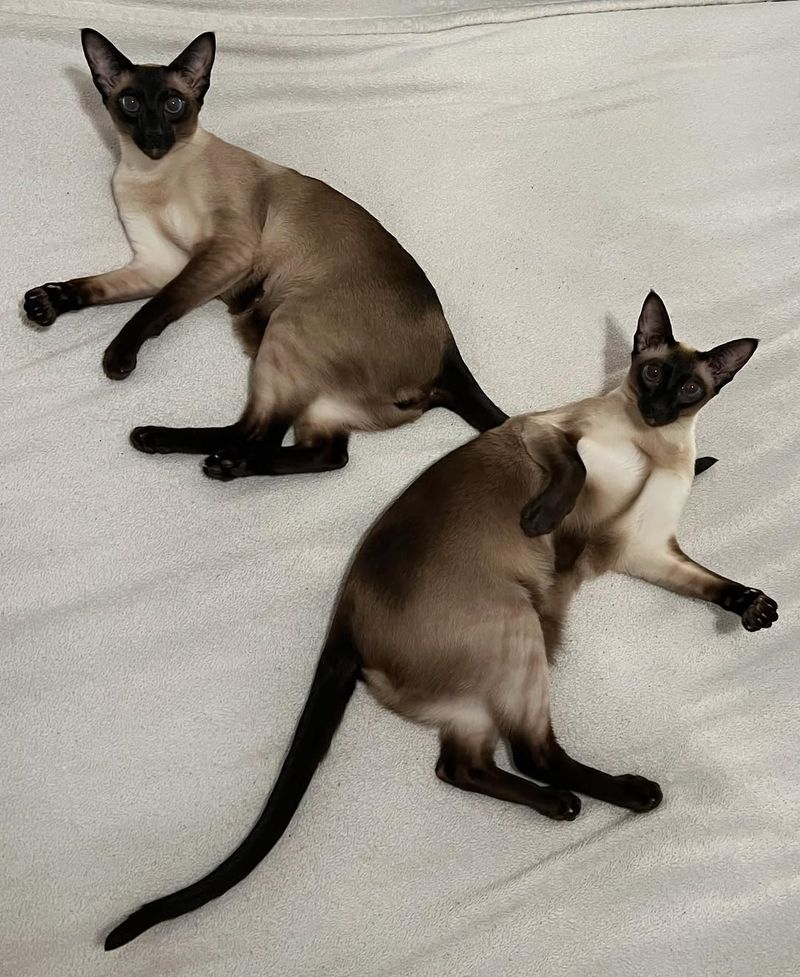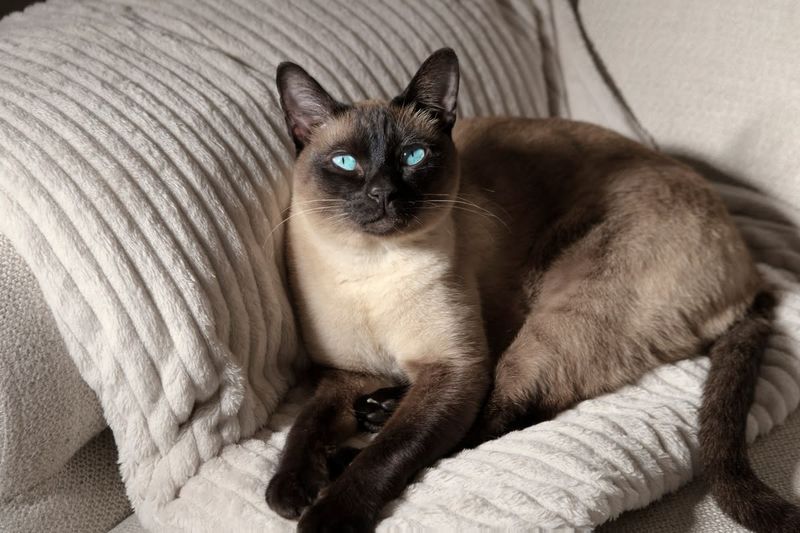📖 Table of Content:
- 1. Blue Eyes That Mesmerize
- 2. Temperature-Sensitive Coat Patterns
- 3. Vocal Virtuosos
- 4. Dog-Like Loyalty
- 5. Social Butterflies
- 6. Ancient Royal Heritage
- 7. Athletic Prowess
- 8. Problem-Solving Intelligence
- 9. Four Distinct Color Variations
- 10. Long Lifespan Companions
- 11. Sibling Synchronicity
- 12. Heat-Seeking Behavior
- 13. Distinctive Face Shape Evolution
Siamese cats are instantly recognizable thanks to their piercing blue eyes, sleek bodies, and color-pointed coats. Their graceful appearance and confident demeanor make them one of the most iconic cat breeds in the world. Known for their elegance, they often carry themselves with a regal air that reflects their noble origins.
Originally from Thailand, formerly known as Siam, these cats have a rich cultural and historical significance. They were once considered sacred and kept by royalty, adding to their mystique and allure. Over time, they have become beloved companions across the globe, admired for both their beauty and personality.
Beyond their looks, Siamese cats are known for being highly social, intelligent, and vocal. Their strong bonds with humans and expressive nature often resemble that of a loyal dog. This unique blend of traits makes them a truly exceptional presence in any household.
1. Blue Eyes That Mesmerize
Those sapphire eyes aren’t just for show – they’re the result of a temperature-sensitive albinism that affects all Siamese cats. The same genetic trait responsible for their color points also gives them those stunning blue peepers that seem to look right into your soul.
Unlike other cats with variable eye colors, every purebred Siamese has this signature trait. Their eyes actually reflect red in photographs instead of the usual green glow of other cats.
Many owners report feeling a special connection when their Siamese makes eye contact, almost as if these intelligent felines understand exactly what you’re thinking.
2. Temperature-Sensitive Coat Patterns
Mother Nature created a living thermometer in the Siamese coat. Their unique color-point pattern develops because of an enzyme that only activates in cooler body areas – like ears, face, paws, and tail – creating those distinctive darker markings.
Kittens are born completely white and develop their points gradually over several weeks. The cooler the climate, the darker their points become – Siamese in cold regions often have deeper, more pronounced markings.
This temperature-sensitive coloration means a Siamese with a fever might temporarily lose some of its color depth until recovering, making them the only cats whose health you can sometimes gauge just by looking at them.
3. Vocal Virtuosos
Forget quiet meows – Siamese cats are famous for their loud, raspy voices that sound almost human at times. They’ve earned nicknames like “the cats that talk back” because of their tendency to respond vocally when spoken to.
Their repertoire goes far beyond simple meows. Siamese cats chirp, trill, and even make sounds that resemble crying babies. Each cat develops its own unique vocabulary of sounds to communicate different needs and moods.
Many Siamese owners report their cats learning to modify their vocalizations based on which ones get the most response from their humans – proof of their social intelligence and communication skills.
4. Dog-Like Loyalty
Siamese cats turn the stereotype of aloof felines upside down with their puppy-like devotion. They commonly follow their favorite humans from room to room, unwilling to let their person out of sight for long.
Their attachment runs deep – many Siamese cats greet their owners at the door when they return home and may even learn to play fetch without any training. This breed thrives on interaction and can become genuinely distressed when left alone for extended periods.
The bond they form is so strong that Siamese cats often select one family member as their special person, though they typically remain friendly with everyone in the household.
5. Social Butterflies
Unlike many independent cat breeds, Siamese cats thrive on social interaction and hate being left alone. They’re notorious for inserting themselves into every household activity, from cooking to cleaning to bathroom visits.
Their social nature extends beyond humans – Siamese cats often bond well with other pets, including dogs. Many owners find that adopting Siamese cats in pairs helps satisfy their need for constant companionship.
When company arrives, don’t expect your Siamese to hide. These social creatures frequently appoint themselves as official greeters, investigating new visitors and demanding attention from anyone who enters their territory.
6. Ancient Royal Heritage
Royal blood runs through every Siamese cat’s veins. Dating back over 600 years, these felines were the exclusive companions of Siamese royalty in ancient Thailand. The penalty for stealing one? Death.
Sacred duties came with their royal status. Siamese cats guarded Buddhist temples and were believed to receive the souls of royal family members after death. Their crossed eyes and kinked tails (traits bred out of modern Siamese) were once considered mystical features.
The first Siamese cats arrived in America in 1878 as a gift to President Rutherford B. Hayes from the American consul in Bangkok, marking the beginning of their worldwide popularity outside their homeland.
7. Athletic Prowess
Built like feline gymnasts, Siamese cats possess sleek, muscular bodies that can leap impressive heights with graceful precision. Their athletic abilities often surprise first-time owners when they effortlessly jump to the top of refrigerators or bookcases.
Despite their refined appearance, these cats are powerhouses of energy. A Siamese can sprint through the house at top speed, execute mid-air turns, and stick landings that would impress Olympic judges. Their slender build masks remarkable strength.
Their athletic nature requires outlets – interactive toys, climbing trees, and play sessions are essential for a Siamese’s physical and mental well-being. Without proper exercise, they may channel their energy into less desirable activities.
8. Problem-Solving Intelligence
Siamese brains match their beauty, ranking among the smartest cat breeds. They quickly figure out how to open doors, cabinets, and even some simple locks, often observing their humans before attempting these feats themselves.
Their intelligence extends to understanding cause-and-effect relationships. Many Siamese cats learn which behaviors earn rewards and which actions get attention, sometimes manipulating situations to their advantage.
Puzzle toys that challenge their minds are perfect for this breed. A bored Siamese can become destructive, so mental stimulation is as important as physical exercise. Some owners even train their Siamese to perform tricks or navigate obstacle courses.
9. Four Distinct Color Variations
Traditional Seal Point Siamese might be the most recognized, but this breed comes in four classic color variations. Each has its own distinctive charm while maintaining the signature pointed pattern.
Chocolate Points feature milk-chocolate colored extremities against an ivory body. Blue Points display bluish-gray markings that create a cooler, more subtle contrast. The rarest variation, Lilac Points, show delicate pinkish-gray points that give them an ethereal appearance.
Beyond these four traditional colors, modern breeding has introduced flame, cream, and lynx (tabby) point variations. Purists may insist on the classic colors, but all variations share the same temperament and distinctive Siamese personality.
10. Long Lifespan Companions
Commitment comes naturally to Siamese cats – they’re among the longest-lived cat breeds. While the average domestic cat lives 12-15 years, healthy Siamese routinely reach 15-20 years, with some exceptional cats living into their mid-20s.
Their longevity means they become deeply integrated into family life, often growing up alongside children and witnessing major life changes. Many owners report their Siamese adapting to different life stages with remarkable flexibility.
This extended lifespan comes with responsibility. Potential Siamese owners should consider the two-decade commitment and plan for senior cat care needs that may emerge in their later years, including potential health conditions common to the breed.
11. Sibling Synchronicity
Siamese cats often develop remarkable bonds with their littermates. Siblings frequently sleep curled together in perfect yin-yang formations and groom each other with dedicated precision, even into adulthood.
Their coordinated behavior can seem almost telepathic. Many owners report Siamese siblings playing games with unspoken rules or responding to situations with identical reactions simultaneously. This synchronized behavior strengthens with age rather than diminishing.
For this reason, many breeders and rescue organizations recommend adopting Siamese cats in pairs, especially siblings who have grown up together. Their deep social connections mean separation can cause significant distress to cats who have bonded.
12. Heat-Seeking Behavior
With coats as fine as silk and a love for warmth in their bones, Siamese cats seem to chase the sun wherever it lands. Their bodies radiate gentle heat, much like a feline hot water bottle. Drawn to radiators, blankets, and laps, they’re experts in the art of staying cozy.
Laptop keyboards, fresh laundry, sunny windowsills, and especially human laps become prime real estate for heat-seeking Siamese. Many owners report their cats burrowing under blankets or sleeping directly on top of radiators during colder months.
This temperature preference connects to their Southeast Asian origins, where tropical climates kept these cats comfortable. Their warmth-seeking behavior makes them especially cuddly companions during winter, when they’ll rarely leave your side.
13. Distinctive Face Shape Evolution
The facial structure of Siamese cats has changed significantly over time due to selective breeding. Traditional or Thai Siamese had rounded heads with gently tapered wedge-shaped faces. In contrast, modern show Siamese are known for their elongated, narrow heads and oversized ears.
This evolution sparked heated debates among cat enthusiasts. Some breeders now specifically produce “Traditional Siamese” or “Thai cats” to preserve the original look. Others continue developing the contemporary ultra-wedged profile for show standards.
Despite these physical differences, both types maintain the distinctive personality traits that make Siamese beloved. The facial structure change represents one of the most visible examples of how selective breeding can dramatically alter a cat breed’s appearance over time.
